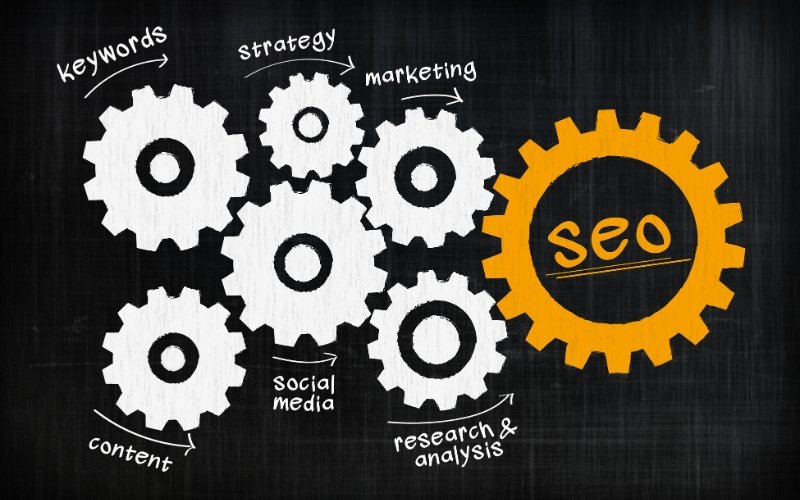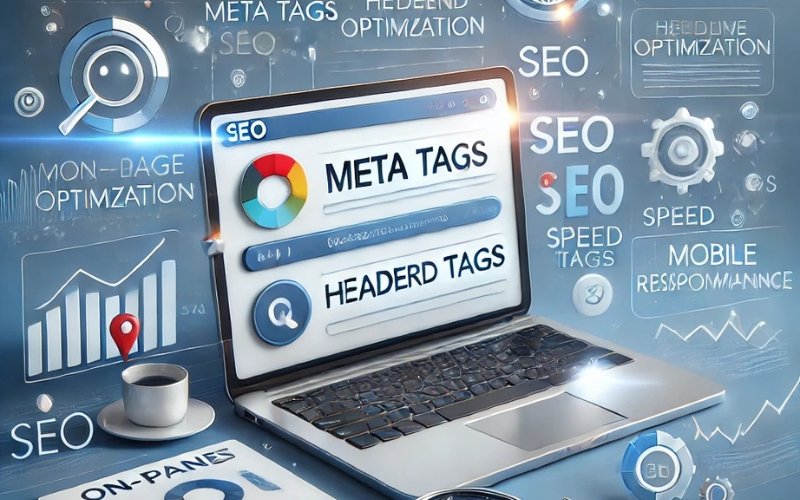In the competitive world of online business, ensuring your website is optimized for search engines is critical. For small businesses, on-page SEO plays a significant role in helping search engines understand your content and delivering it to the right audience. On-page SEO refers to the practice of optimizing individual web pages to rank higher in search results and drive more relevant traffic to your website. This article will explore the importance of on-page SEO, its key components, and how to implement effective strategies to improve your website’s visibility and success.
What Is On-Page SEO?
On-page SEO is all about Optimizing Your Website for Success by managing the elements of a web page that are under your control. Unlike off-page SEO, which focuses on building authority and trust through external factors like backlinks, on-page SEO centers around the content, structure, and HTML code on your website. When done correctly, Optimizing Your Website for Success through on-page SEO helps search engines like Google understand your website’s relevance to specific search queries, making it easier for your pages to rank higher in the search engine results pages (SERPs).
For small businesses, on-page SEO is essential because it ensures that each page of your website is tailored to the keywords and phrases your target audience is searching for. Additionally, Optimizing Your Website for Success through on-page SEO enhances the overall user experience, which is a critical ranking factor for search engines. By focusing on these optimizations, small businesses can compete with larger competitors and increase their online visibility.
Key Components of On-Page SEO

There are several key elements of on-page SEO that work together to improve a page’s ranking potential. These elements include keyword optimization, meta tags, headers, content quality, internal linking, and technical factors like page speed and mobile-friendliness. Let’s dive deeper into each of these components.
Keyword Optimization:

Optimizing Your Website for Success is the foundation of on-page SEO. These are the terms or phrases that users type into search engines when looking for products, services, or information. To achieve Optimizing Your Website for Success, you need to include that keyword in strategic places, such as the page title, headers (H1, H2, etc.), meta description, and throughout the body of the content. However, it’s important to use Optimizing Your Website for Success naturally and avoid “keyword stuffing,” which can lead to a penalty from search engines. Instead, aim for a balance where your content flows naturally while incorporating your target keywords.
For small businesses, focusing on long-tail keywords (more specific phrases that are easier to rank for) can be particularly effective. Optimizing Your Website for Success typically has lower search volume but attracts more relevant traffic, increasing the likelihood of conversions.
Meta Tags:
Meta tags are HTML elements that provide information about a web page to search engines and users. The two most important meta tags for Optimizing Your Website for Success are the meta title and meta description. The meta title appears as the clickable headline in search results, while the meta description is the short text snippet that describes the content of the page.
A well-crafted meta title should include your target keyword and be compelling enough to encourage users to click on your link. Similarly, the meta description should provide a clear summary of what the page is about and include Optimizing Your Website for Success. Even though meta descriptions don’t directly affect rankings, they can improve click-through rates, which can indirectly boost your SEO performance through Optimizing Your Website for Success.
Header Tags (H1, H2, H3):
Headers (H1, H2, H3, etc.) help structure your content and make it more readable for both users and search engines. The H1 tag, which is typically used for the main title of the page, should contain your primary keyword. Subheadings (H2, H3) should organize your content logically and include variations of your keywords when appropriate.
Search engines use header tags to understand the hierarchy and importance of the content on your page. Clear and logical header structures not only improve SEO but also enhance user experience by making the content easier to navigate.
Content Quality:
Optimizing Your Website for Success is one of the most critical factors in on-page SEO. High-quality, informative, and engaging content keeps users on your site longer, reduces bounce rates, and encourages social sharing—all of which can positively impact your SEO. When creating content, it’s essential to ensure that Optimizing Your Website for Success provides real value to your audience. Answer questions, solve problems, and offer insights that your readers are searching for.
Google’s algorithm increasingly favors content that demonstrates expertise, authoritativeness, and trustworthiness (E-A-T). To rank well, Optimizing Your Website for Success should be accurate, well-researched, and relevant to the keywords you’re targeting. Regularly updating your content also signals to search engines that Optimizing Your Website for Success is active and current.
Internal Linking:

Internal linking refers to the practice of linking to other pages on your website. These links help distribute “link equity” across your site, improving the SEO performance of individual pages. Internal links also assist search engine crawlers in discovering new content and understanding the structure of your website.
For small businesses, internal linking can help guide users to related content and keep them on your site longer, increasing the likelihood of conversions. Be sure to use descriptive anchor text (the clickable text in a hyperlink) that includes relevant keywords to further optimize your internal links.
Page Speed and Mobile-Friendliness:
Page speed and mobile-friendliness are technical SEO factors that significantly impact both user experience and search engine rankings. A slow-loading page can frustrate users and lead to higher bounce rates, while mobile users expect websites to be responsive and easy to navigate on smaller screens.
Tools like Google PageSpeed Insights can help you identify and fix performance issues that slow down your site. Additionally, using a responsive design ensures your website is accessible on all devices, which is particularly important as more users access the web through mobile devices.
Why On-Page SEO Matters for Small Businesses
For small businesses, on-page SEO offers several advantages that contribute to long-term success. First and foremost, it’s a cost-effective way to improve your website’s search engine rankings without the need for extensive external resources. Unlike paid ads, which require ongoing investment, optimizing your website for search engines can provide lasting benefits that drive organic traffic over time.
Moreover, on-page SEO helps small businesses compete with larger companies by focusing on user experience and targeted keywords. By producing high-quality content and optimizing each element of your web pages, you can attract more relevant traffic and convert visitors into customers.
Conclusion
On-page SEO is a powerful tool that allows small businesses to improve their website’s visibility and user experience. By optimizing key components like keywords, meta tags, headers, and content quality, you can ensure that your website ranks higher in search results and attracts the right audience. With a focus on technical aspects like page speed and mobile-friendliness, small businesses can also enhance their SEO performance and provide a seamless user experience. Implementing these strategies will help you build a strong foundation for your online presence and achieve long-term success in search engine rankings.

